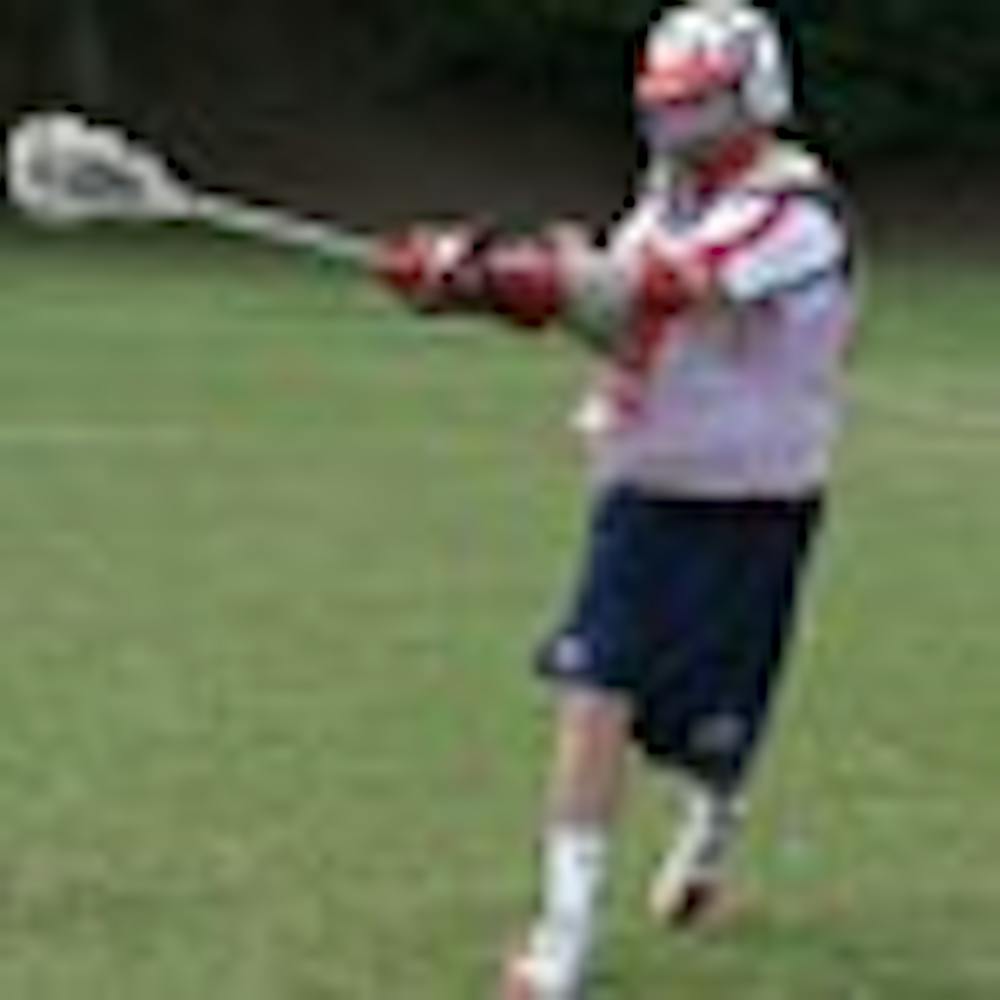Men's lacrosse at the University of Richmond is changing from "a bunch of rag-tag frat boys" to a respectable team, club president Dan Colosimo said.
The team aims to become a varsity club, meaning more money and better competition, said Tom Roberts, director of Recreation and Wellness. Part of the university's Strategic Plan is to support student organizations, Roberts said, and his proposal would elevate men's lacrosse and women's crew to varsity clubs.
"Other universities have established varsity clubs, and they look very similar to an NCAA sport in the way they're funded and supported," Roberts said. "But they don't have the restrictions of the NCAA and they don't report to the athletic department. They report to Recreation and Wellness."
Last spring, when Roberts heard that alumni donors wanted to help improve the lacrosse program, he contacted Colosimo and team coach Fred Plaisted. Colosimo said Recreation and Wellness was already more accommodating, giving the team priority for its fields and games.
The operating budget for varsity clubs ranges from $100,000 to $500,000, Roberts said, but only a portion of that comes from university funds. The rest of the money for lacrosse would come from an increase in players' annual dues, currently $150, and alumni donations.
The increase in dues will not be too drastic, because another facet of the Strategic Plan is affordability, Roberts said. He said he would want to make money available for players who couldn't afford the annual dues.
It will be hard to get the older players to buy into the new team philosophy, Colosimo said, since they're busy with fraternities and other organizations. But Colosimo said he hoped the influx of freshman lacrosse players - which he called a "broverload" - would make the team more competitive.
The team will join the Men's Collegiate Lacrosse Association, a change Colosimo said he hoped would be effective next fall. The team currently plays in the National College Lacrosse League, which Plaisted said was composed of about 110 teams with operating budgets of less than $2,500.
The MCLA competition is better because those schools often don't have NCAA programs, Colosimo said, whereas most NCLL schools do. The nearest MCLA school is Virginia Tech, and Roberts said the MCLA officials told him they would like to form a new league with schools such as Richmond, James Madison University and the College of William & Mary.
Another goal of moving to the MCLA is to attract students who value academics, Colosimo and Roberts said. Many top-tier Division I lacrosse programs have good academics, Colosimo said, but the average D-I programs aren't as academically challenging as Richmond.
"The kind of students affiliated with lacrosse and crew are high academic-achieving students," Roberts said. "We can recruit good students that might be getting offers to go to Division I to play lacrosse but some of the Division I schools might not have the academic reputation of the University of Richmond."
Other proposed changes are to hire a trainer to get the team in better shape, Colosimo said, and to hire an administrator to take the responsibility of scheduling games away from the students.
Enjoy what you're reading?
Signup for our newsletter
Roberts also said varsity club coaches, such as Plaisted and his assistant, Matt Werner, could get paid when the budget increases.
Plaisted said his ultimate goal was to make men's lacrosse an NCAA sport at the University of Richmond. Athletic Director Jim Miller wrote in an e-mail that alumni and prospective parents often asked him about making men's lacrosse an NCAA varsity program.
"There does seem to be a growing interest," Miller said. "However, adding varsity sports is an expensive proposition. In today's economic environment, it would take significant contributions from those interested in starting the program."
Roberts said that as a varsity club, the team would get all the benefits of a varsity program without the cost. The transition to becoming a varsity club, which Roberts said could take one to two years, has already started.
The team had its first fall meeting two weeks ago, Plaisted said, and its first practice was on Tuesday. Their practices, held three times a week on the intramural fields, are one and a half to two hours long, and their weekly meeting is 45 minutes to an hour, he said.
The team will have between 10 and 15 scrimmages this fall, Plaisted said, the first of which is at home against William & Mary on Sept. 20. During the spring, the team will play as many as 20 games to get as much competition as possible, Plaisted said.
Colosimo said: "It's going to be a lot more intense. ... It's a great way of retaining kids who come to school here and feel like they don't have a place to fit in."
Contact staff writer Barrett Neale at barrett.neale@richmond.edu
Support independent student media
You can make a tax-deductible donation by clicking the button below, which takes you to our secure PayPal account. The page is set up to receive contributions in whatever amount you designate. We look forward to using the money we raise to further our mission of providing honest and accurate information to students, faculty, staff, alumni and others in the general public.
Donate Now



